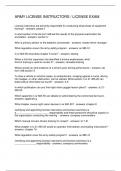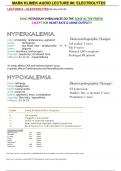EMF Electro Motive Force it is a total
energy supplied
per Coloumb of the cell
charge by
Current is the Rate of flow of charge units Amperes
Coulombs
Of Charge
time seconds
Potential differenceIlloltage is thework done
per unit per positive change Units Volts
work done Joules
µ
Resistance is the opposition to the flow of electron currents units ohms R
R
Setup
Cells in series
positive pole connect to pole
neg
emf sum of individual emf's
Resistors in series
current is the same for all
Emf accross connection is to sun of individ
emf Vit Unt Vs
R total is equal to sum of separate resistance
B total r t ra t B
, They are potential divider The potential
derides in sam ratio as the resistor
Ammeters
measurecurrent through a resistor
must be connected in Series
has low resistance
very
Parallel
more than one points between
pathway
have different current values
same potential difference
Cells in parallel
all positive poles connected Sney poles connecte
emf is the same as emf of single cell
Resistors in parallel
Voltage is same across all branches
total current is equal
to sum of separate branche
I total i t ist 13
total resistance is calculed
I trough
Reotal IT Fitz
ORritz
Rtotal r tr
current divider Current divides in the
inverse ratio to resistors










